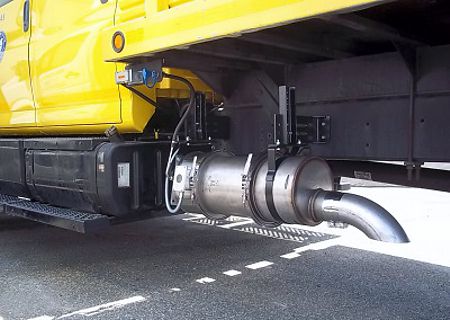In today’s environmentally conscious world, retrofit emission control devices are gaining significant attention as an effective solution to reduce harmful emissions from various sources. Increase efficiency and reduce emissions with our retrofit emission control device for DG Sets. The advanced technology helps you comply with environmental regulations while optimizing the performance of your generator. Upgrade your DG set today and experience cleaner operations and cost savings. In this article, we will delve into the different types of retrofit emission control devices and their role in creating a cleaner and healthier environment.
Understanding Retrofit Emission Control Devices
Before we dive into the various types of retrofit emission control devices, let’s first grasp the concept behind them. Retrofit emission control devices are technologies designed to be installed on existing vehicles, industrial machinery, or power plants to reduce the emissions they generate. These devices are crucial in mitigating the negative impact of pollution on the environment and human health.
The Different Types of Retrofit Emission Control Devices
1. Diesel Particulate Filters (DPFs)
DPFs are widely used in diesel engines to capture and remove harmful particulate matter (PM) emissions. These filters effectively trap microscopic particles before they are released into the atmosphere, significantly reducing air pollution. DPFs are commonly used in vehicles, construction machinery, and various industrial applications.
2. Selective Catalytic Reduction (SCR) Systems
SCR systems are advanced emission control technologies primarily used in heavy-duty diesel engines. These systems employ a catalyst to convert nitrogen oxides (NOx) into harmless nitrogen gas and water vapor, resulting in a substantial reduction in NOx emissions. SCR systems have proven to be highly effective in reducing pollution from trucks, buses, and power plants.
3. Exhaust Gas Recirculation (EGR) Systems
EGR systems are commonly employed in gasoline and diesel engines to reduce nitrogen oxide emissions. By recirculating a portion of the exhaust gas back into the engine’s combustion chamber, EGR systems help lower the temperature during combustion, ultimately reducing the formation of NOx. EGR systems are widely used in passenger cars, trucks, and off-road vehicles.
4. Oxidation Catalytic Converters
Oxidation catalytic converters are designed to reduce emissions of hydrocarbons (HC) and carbon monoxide (CO) from gasoline and diesel engines. These converters utilize a catalyst to promote chemical reactions that convert these harmful pollutants into less harmful substances. Oxidation catalytic converters are commonly found in automobiles and small industrial engines.
The Benefits and Importance of Retrofit Emission Control Devices
Investing in retrofit emission control devices offers several benefits and is crucial for a cleaner environment:
- Significant reduction in harmful emissions, improving air quality
- Protection of human health by minimizing exposure to pollutants
- Compliance with stringent environmental regulations
- Promotion of sustainable development and a greener future
Conclusion
Retrofit emission control devices play a crucial role in reducing pollution and creating a healthier environment. From diesel particulate filters and SCR systems to EGR systems and oxidation catalytic converters, each type of device tackles specific emission challenges. By adopting these technologies, we can collectively work towards a cleaner and more sustainable future.
Read More( Click Here)








